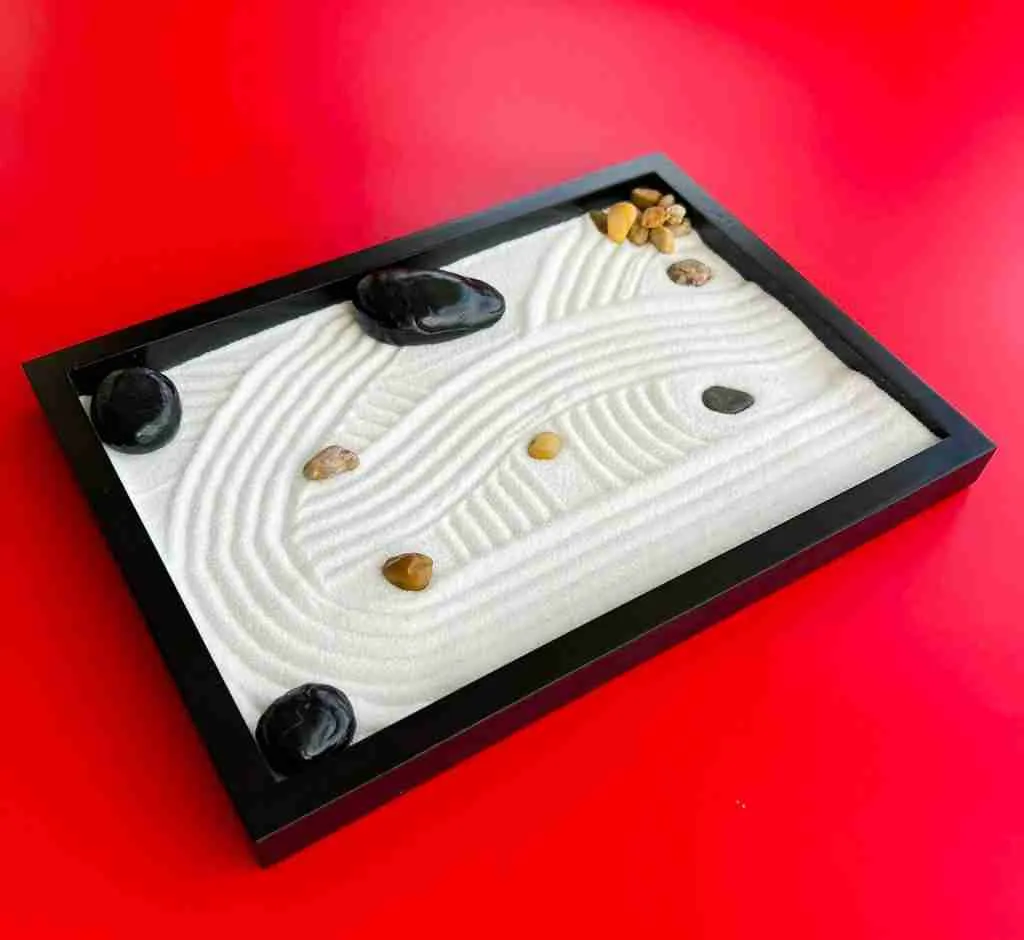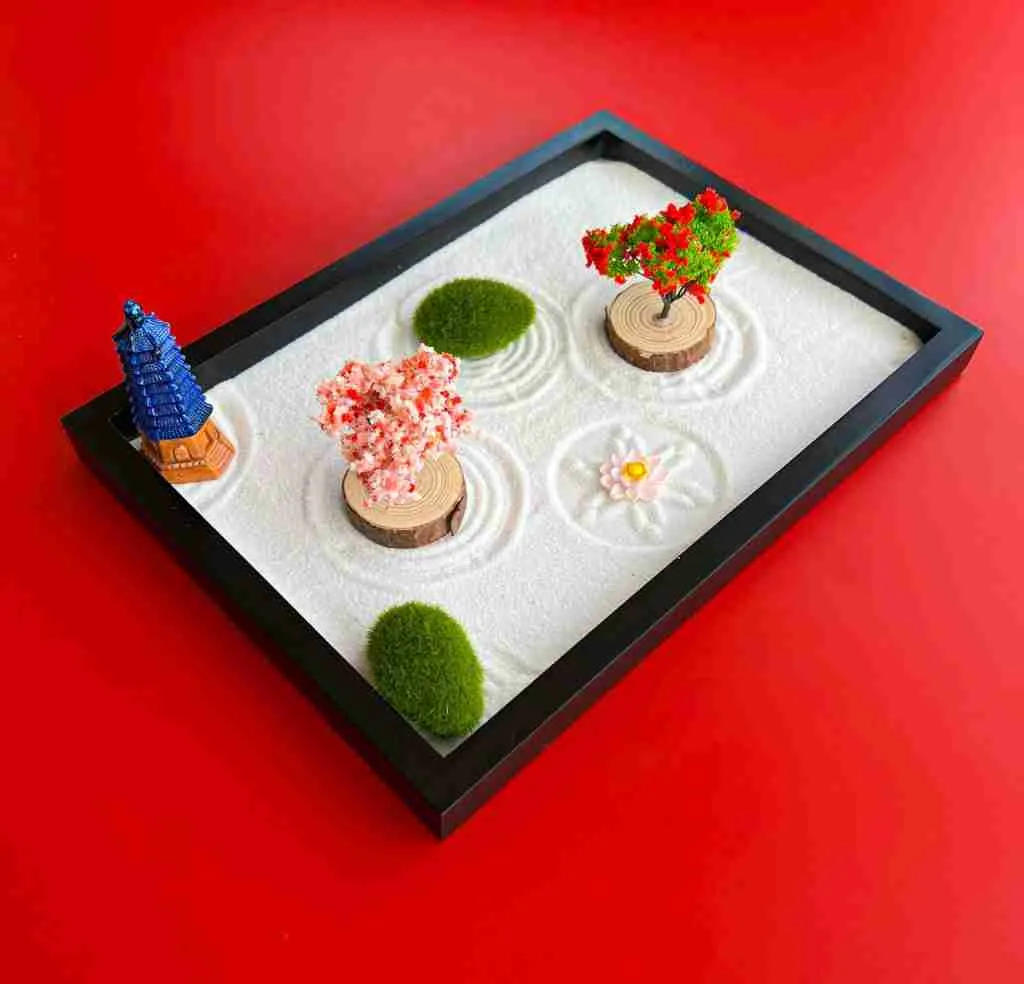The 5 elements of a Zen garden are water, earth, air, wood, and fire. You can implement them in your Zen garden design in order to represent natural elements and align with one another. By including elements of nature, a zen garden creates a unique environment. And the users will surely enjoy the peace, tranquility, and calmness which are some of the essential benefits of a Zen garden. Want to try our unique desk Zen garden for desk? Grab one here on Amazon.
These five elements of nature work together to reinforce the connection we make with nature. As well as the emotional connection they make with each other. Today we will discuss these 5 elements and how you can incorporate them in both indoor (desk zen gardens) and outdoor spaces (traditional backyard Japanese gardens). Alright! Let’s get right into it.
Earth

Indeed, the earth is the foundation of Japanese gardens. They represent the ground or sand on which you can design or place all other non-water elements. Truly, the composition of the earth element can be from dirt, sand, rocks, ground, concrete, fine-grained stone, or a mixture of these. Additionally, the ground can also contain features such as stepping stones which is very commonly implemented in outdoor and indoor Japanese gardens today.
We often use the earth element symbolically in Japanese gardens to represent the nations of the world. That is one sees the earth as a place where people should live and as a symbol of the nations of the world. This is particularly true since the earth is a direct symbol of the world, but it is also the first thing that people encounter when they step into a Japanese garden. The earth’s features are represented by the sand and rocks in the sand garden above.
Air
Air is no doubt the second most important element in a Zen garden. Think of it as the medium through which the other four elements connect. It is represented by the wind, which blows in from the four sides of the garden, and by the sky, which is often blue. Also, the air can be thought of as the breath of life in a Zen garden, just as water flows over rocks to create a river.
Fire
Fire is the element that has the least amount of symbolic meaning in a normal Japanese garden. However, it can be used symbolically to represent, among other things, the never-ending quest for knowledge and enlightenment, the connection to ancestors, and the connection to the land.
The word ‘fire’ has a lot of different meanings depending on the context. In a Japanese garden, the word ‘fire’ can evoke images of the spirit of the garden, and of a cleansing fire, which burns away all of the negative or inauthentic energies of the past. In other words, the fire element consumes the stress, and anxiety and cleans up a wandering mind. As a result, leaves the body with a pure state of mental alertness.
Water

The water element has four main parts: the collection basin, the waterfall, the pond, and the stream. The pond is often found in the front of a Japanese garden, as it serves as a place for reflection, peace, and tranquility and is often surrounded by waterfalls and/or a waterfall. These water elements are used in combination to convey the message of the garden. In a desk Zen garden, you can implement the water element by creating patterns on the sand. The most common patterns are wavy, spiral, or circular lines to represent the ripple effect of water.
Wood

Certainly, the wood element is the fourth most important element in a Japanese garden. It is one of the oldest elements in a Japanese garden along with water, earth, and fire and it is one that is often the most difficult to work with. This is because wood is an organic material and is therefore constantly changing in appearance due to weather, insects, decay, etc. The wood in a Japanese garden can be the sap of a freshly fallen maple tree, the heartwood of a centuries-old oak, bamboo, mosses, and plants like trees and flowers.
To sum it all up, the wood is a tangible symbol of the infinite wealth and infinite possibility of nature, which inspires the viewer to appreciate all aspects of the natural world.
Conclusion
We have discussed the 5 Elements of a Zen garden, water, earth, air, wood, and fire. A Zen garden is a place of beauty and peace. It’s meant to provide its visitors with a sense of calm and tranquility. So, the 5 Elements of a Zen garden can be used to create a meditative atmosphere to achieve the Zen meditation objectives of such a garden.




